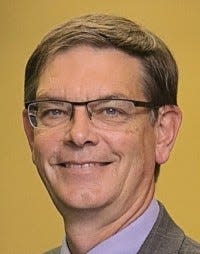Dr. Jerry Kruse: The toolbox of harmony

I like to watch TED Talks on YouTube. Recently, I watched one delivered in 2008 by Jonathan Haidt, a social psychologist who discussed the moral roots of liberals and conservatives. As we debate issues related to many human rights, and as increasingly absolute positions are taken, this topic is particularly relevant today.
Haidt made one main assertion, and it stuck with me. To make his point, he quoted Sengcan, “If you want the truth to stand before you, never be ‘for’ or ‘against.’ The struggle between ‘for’ and ‘against’ is the mind’s worst disease.”
Haidt’s research has determined that human minds are programmed to unite us into teams, to divide us against other teams, and, in order to maintain the team, to blind us to the truth. He postulated that the large societies that have been successful in overcoming division between groups are those that have put aside the absolute mindset of “for” or “against.” He noted that harmony was achieved in those instances only by using “every tool in the toolbox.”
So, what are these tools, and where is the toolbox? As I listened to Haidt, a moment in my own education came to mind. The last two years of my medical education included a degree in public health and a Robert Wood Johnson Fellowship in Academic Family Medicine.
Previous column:Dr. Jerry Kruse: Treating everyone equitably takes effort, empathy
The fellowship had a course in biomedical ethics. In addition to the usual course work, the class met periodically in the home of Dr. Gerald T. Perkoff, our fellowship director. Most memorable were the lively discussions of ethical dilemmas over dinner.
One evening, during a discussion of professionalism, Dr. Perkoff described the historic characteristics of the three learned professions – divinity, law and medicine. He discussed five characteristics of these professions, constant since medieval times: 1. mastery of a vast body of accumulated and changing knowledge, 2. provision of uncompensated services, 3. teaching the next generation of professionals, 4. leadership and service to the community, and 5. strict adherence to the principle of confidential relationships with clients. That is a toolbox, with five tools that can help overcome divisions.
Take a moment to broadly consider these five tools – reliance on knowledge, provision of care to those who cannot pay (and likely need it the most), teaching, service and leadership, and care to protect an individual’s right to privacy and to properly use information. These tools belong not only to a toolbox of the three age-old professions, but are rightly assets of all of society.
More:Gun violence is a predictable, prophetic reality in the U.S.
Our society’s use of these tools has waned, and absolutism has increased. Science, and the new knowledge it produces, is under fire. Many people rail against a commitment to those most vulnerable. Our teachers, especially those at the primary and secondary level, are paid a pittance compared to the worth of their work. The client-professional relationship is being progressively eroded. The right to privacy is beleaguered by the highest levels of authority, and information is misapplied seemingly at every turn.
Voting rights, women’s rights, reproductive rights, environmental rights, privacy rights, human rights, civil rights, the Bill of Rights, the right to life, the right to liberty and the right to the pursuit of happiness are all topics of hot debate. Our retreat to absolutism has made each of these categories of rights more vulnerable to decay than such rights have been in more than a century. Our best tools for unity are rusting away.
The messages of Perkoff and Haidt should be heeded. Application of the principles of professionalism to issues related to human rights takes hard work, and it takes a commitment to a greater good for all. It takes a commitment to harmony between disparate teams. It requires a retreat from absolute attitudes, so that the principles, the tools, have a chance to be applied. It takes an understanding that our fundamental rights are actually blurred at the edges, with the grey zones that are needed for discourse to begin.
The Ninth Amendment of the Bill of Rights defines the grey zone. “The enumeration in the Constitution, of certain rights, shall not be construed to deny or disparage others retained by the people.” The writers knew that they could not possibly conceive of all of the issues that might arise in the future. Thus, there is expansive room for dialog, if we will allow it. Let’s get back to it, and use the historic tools of professionalism as our guide for engagement.
Jerry Kruse, MD, MSPH, is dean and provost, SIU School of Medicine and CEO, SIU Medicine.
This article originally appeared on State Journal-Register: The toolbox of harmony
